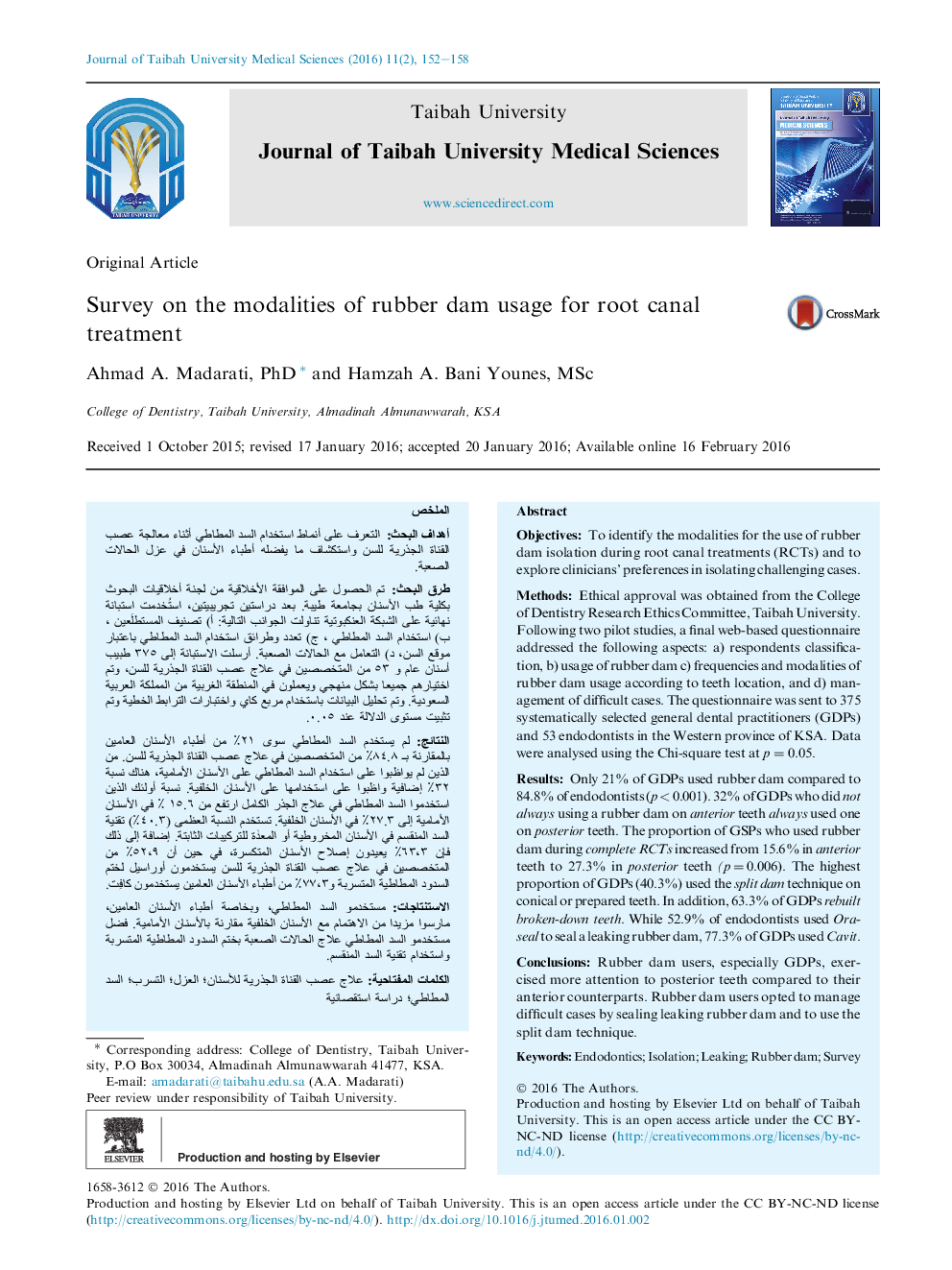| Article ID | Journal | Published Year | Pages | File Type |
|---|---|---|---|---|
| 3484330 | Journal of Taibah University Medical Sciences | 2016 | 7 Pages |
ObjectivesTo identify the modalities for the use of rubber dam isolation during root canal treatments (RCTs) and to explore clinicians' preferences in isolating challenging cases.MethodsEthical approval was obtained from the College of Dentistry Research Ethics Committee, Taibah University. Following two pilot studies, a final web-based questionnaire addressed the following aspects: a) respondents classification, b) usage of rubber dam c) frequencies and modalities of rubber dam usage according to teeth location, and d) management of difficult cases. The questionnaire was sent to 375 systematically selected general dental practitioners (GDPs) and 53 endodontists in the Western province of KSA. Data were analysed using the Chi-square test at p = 0.05.ResultsOnly 21% of GDPs used rubber dam compared to 84.8% of endodontists (p < 0.001). 32% of GDPs who did not always using a rubber dam on anterior teeth always used one on posterior teeth. The proportion of GSPs who used rubber dam during complete RCTs increased from 15.6% in anterior teeth to 27.3% in posterior teeth (p = 0.006). The highest proportion of GDPs (40.3%) used the split dam technique on conical or prepared teeth. In addition, 63.3% of GDPs rebuilt broken-down teeth. While 52.9% of endodontists used Oraseal to seal a leaking rubber dam, 77.3% of GDPs used Cavit.ConclusionsRubber dam users, especially GDPs, exercised more attention to posterior teeth compared to their anterior counterparts. Rubber dam users opted to manage difficult cases by sealing leaking rubber dam and to use the split dam technique.
